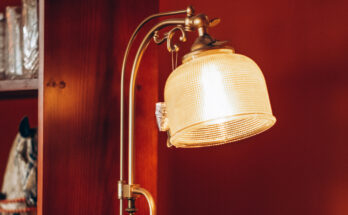Is A Smart Gardyn Worth Your Investment? Here’s What Shoppers Say
Growing a healthy edible garden takes more than just a green thumb. The amount of space, time, and resources that you have access to also plays a part, which leaves most people at the mercy of whatever produce they can find at the grocery store. This is the problem that Gardyn hopes to solve with its smart indoor gardens. Shoppers have generally found the Gardyn system to be worth the investment, with a few caveats.
Gardyn makes smart indoor hydroponic gardens, in which plants grow in water rather than soil. Each Gardyn comes with a water tank, plant grow lights, seeds — everything you need to get started growing your produce of choice, no expertise needed. The system automatically controls watering and lighting, and it includes cameras and sensors to monitor plant health. With an additional monthly membership, you also get access to an AI “master gardener”, “vacation mode,” and other perks.
Gardyn’s claim to fame is its small footprint and impressive output: unlike other smaller hydroponic systems, you can grow full-size plants in it, yet it only takes up 1.5 to 2 feet of floor space. The main downside? The price. Currently on offer is the Gardyn Home 4.0, which at $899, can house 30 plants and produce 8 to 10 pounds of produce per month. The Gardyn Studio is $499, and houses 16 plants for 4 to 5 pounds of produce per month. These are hefty price tags, and though many shoppers have found it worthwhile for its convenience, others say it’s not quite as hands-off as it seems at first glance.
Gardyn pros
Gardyn has generally positive reviews from shoppers. It’s especially popular with those who are unfamiliar with gardening, have no space for an outdoor garden, or have health-related obstacles to traditional gardening. It’s also an attractive option for those who can’t garden outdoors during the winter, since Gardyn’s indoor system works year-round. Gardyn offers a broad catalog of plants to choose from, with a focus on edible plants like greens, vegetables, and fruits, but there are also ornamental flowers like snapdragons and sunflowers. Reviewers praise the joy of being able to harvest herbs anytime or make a quick fresh-picked salad. On top of not taking up much room, buyers say the unit looks sleek and attractive, and since it’s not dependent on sunlight, you can put it anywhere.
The Gardyn is easy to set up, and maintaining the system is mostly a matter of keeping the water full and keeping it clean. Your initial purchase comes with a free month of membership, so you get access to Gardyn’s AI assistant to help ease you into taking care of your new plants. It offers tips and tricks and reminds you when to perform important tasks — things like adding plant food and harvesting.
Of course, plants don’t live forever. When it’s time to add new plants to your Gardyn, you can either buy new seeds from them (they call them yPods) — members get free credits for this each month — or, if you’re crafty, make your own. Seeds must be sprouted before they’re ready to add to your Gardyn, and the company will replace seeds that fail to sprout.
Gardyn cons
It’s rarely cheap to start a smart garden, and Gardyn’s price is a big consideration, particularly if you continue the $25 to $39 per month membership. Add that to the cost of electricity, plants, and nutrients, and you may not end up saving much money on produce. Some reviewers find that the membership isn’t worth the extra cost once you get the hang of caring for your plants, which could help improve the math.
Maintaining a Gardyn also isn’t quite as hands-off as it first seems. Shoppers say the cleaning process is time-consuming and cumbersome, since you have to lift the tower off of the water tank; this must be completed monthly in addition to disassembling and deep cleaning the system four times per year. Pests are also a likely reality — one of the disadvantages of hydroponic gardening. Keeping your Gardyn working properly will require troubleshooting, adjusting, and monitoring your plants just like any garden.
At the same time, the Gardyn system isn’t designed for too much DIY or experimentation. You can’t expand a Gardyn, and you’re intended to continue buying plants from the company, though making your own pods is possible with the right supplies. Some shoppers have complained of their systems breaking and say it’s difficult to fix on your own. In conclusion, if you’re already an experienced gardener, are on a budget, or prefer to tinker, it may not be worth forking out for a Gardyn. But those who want an easy set-up, could use, plenty of guidance, and don’t mind paying a premium will likely find the Gardyn a great buy.

